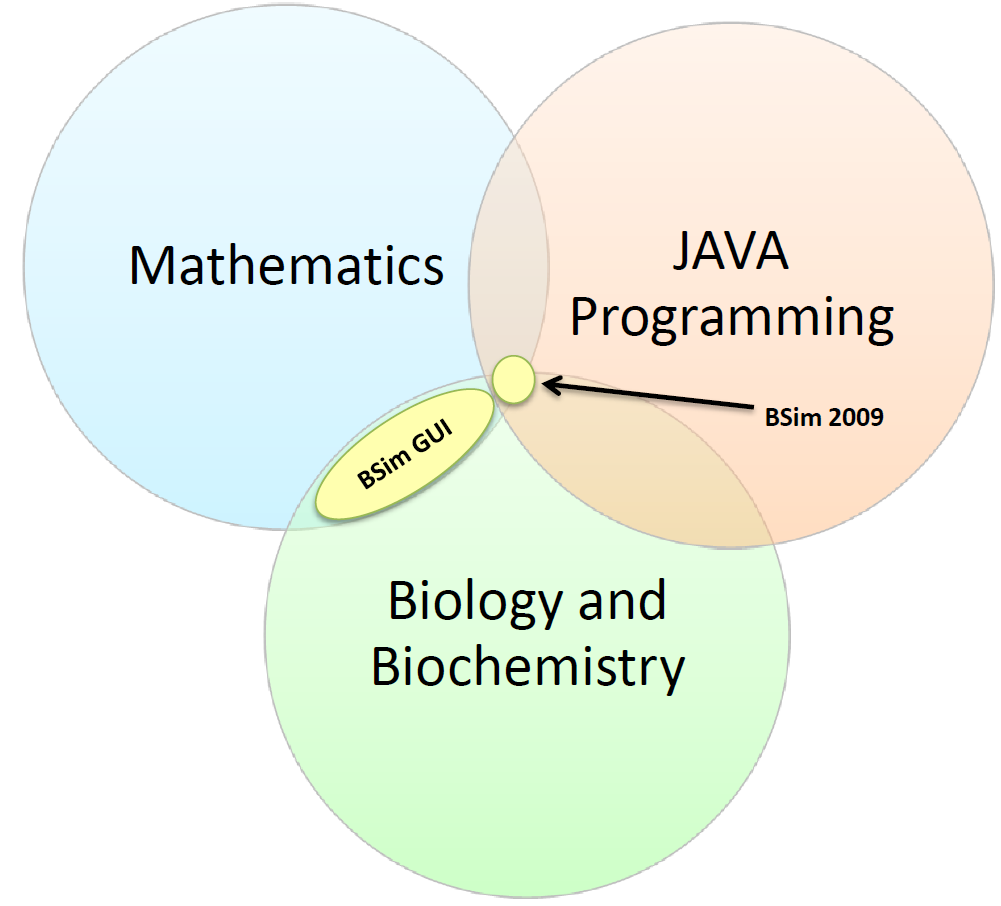Team:BCCS-Bristol/Modelling/BSIM/GUI
From 2010.igem.org
(→Features) |
|||
| Line 13: | Line 13: | ||
** Chemical emission and consumption | ** Chemical emission and consumption | ||
* Colour signalling | * Colour signalling | ||
| - | * ODEs | + | * Ordinary Differential Equations (ODEs) |
* Variable boundary conditions | * Variable boundary conditions | ||
* Directed movement (Chemotaxis) | * Directed movement (Chemotaxis) | ||
| - | |||
| - | |||
===Motivation=== | ===Motivation=== | ||
Revision as of 16:34, 10 October 2010
iGEM 2010
Contents |
GUI
About the GUI - more development, how to use it is covered in 'installation'
Features
The new GUI supports many of the features of BSim 2009. These include:
- Brownian Motion
- Collisions
- Chemical fields
- Detection
- Chemical emission and consumption
- Colour signalling
- Ordinary Differential Equations (ODEs)
- Variable boundary conditions
- Directed movement (Chemotaxis)
Motivation
The 2009 edition of BSim was written using an object-oriented programming language called JAVA. This was an excellent tool in which to construct BSim, as it made it very easy to produce agent-based models. However, modelling a specific system in BSim required the user to edit JAVA code. We envision a future in which BSim is a widely used and accessible modelling framework. To achieve this we needed to create an interface that allows users unfamiliar with JAVA to create simulations in BSim. This would allow BSim to be utilised by the entire synthetic biology community, rather than just specialist modellers.
The GUI Target Market
The modelling portions of iGEM projects at BCCS-Bristol have historically involved knowledge of JAVA, mathematics and biochemistry. The 2009 edition of BSim relied on the user’s knowledge of all three. By removing the need for JAVA knowledge, we have opened up BSim to a much wider category of users. The GUI only requires users to be able to express their biological system mathematically. It can then translate the user’s requirements into JAVA code.
 "
"
